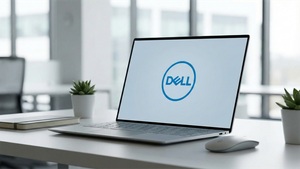
Peloton’s first quarter results met Wall Street’s expectations, but the market responded negatively as sales fell and subscriber numbers continued to decline. Management attributed the quarter’s performance to lower hardware sales and a year-over-year reduction in paid Connected Fitness subscriptions, partially offset by improved unit economics and cost discipline. CEO Peter Stern described the ongoing shift towards a higher-margin, subscription-focused model, highlighting that the company achieved its fifth consecutive quarter of positive adjusted EBITDA and free cash flow. Stern noted, “We continue to track ahead of our $200 million cost restructuring plan, which is driving meaningful improvement in profitability.”
Is now the time to buy PTON? Find out in our full research report (it’s free).
Peloton (PTON) Q1 CY2025 Highlights:
- Revenue: $624 million vs analyst estimates of $621.5 million (13.1% year-on-year decline, in line)
- Adjusted EPS: -$0.04 vs analyst estimates of -$0.04 (in line)
- Adjusted EBITDA: $89.3 million vs analyst estimates of $80.37 million (14.3% margin, 11.1% beat)
- The company slightly lifted its revenue guidance for the full year to $2.46 billion at the midpoint from $2.46 billion
- EBITDA guidance for the full year is $340 million at the midpoint, below analyst estimates of $345 million
- Operating Margin: -5.2%, up from -20.4% in the same quarter last year
- Connected Fitness Subscribers: 2.88 million, down 171,000 year on year
- Market Capitalization: $2.55 billion
While we enjoy listening to the management's commentary, our favorite part of earnings calls are the analyst questions. Those are unscripted and can often highlight topics that management teams would rather avoid or topics where the answer is complicated. Here is what has caught our attention.
Our Top 5 Analyst Questions Peloton’s Q1 Earnings Call
- Youssef Squali (Truist): Asked about Peloton’s progress on key initiatives and management changes; CEO Peter Stern explained cost reductions and the focus on innovation, while noting that new hires are intended to drive operational and commercial improvements.
- Arpine Kocharyan (UBS): Inquired about the impact of broader consumer slowdown; CFO Liz Coddington reported modest hardware sales softness but highlighted the resilience of subscription revenue and efforts to offer lower-priced options.
- Arpine Kocharyan (UBS): Followed up on pricing and cost discipline; Stern said the company is evaluating pricing for both hardware and subscriptions, and that cost control remains a priority to support profitability.
- Doug Anmuth (JPMorgan): Sought clarity on marketing strategy and future free cash flow; Stern described a holistic review of marketing spend, and Coddington signaled ongoing free cash flow generation, with inventory optimization tailwinds set to moderate next year.
- Simeon Siegel (BMO Capital Markets): Queried member base trends and the used equipment activation fee; Stern and Coddington clarified that churn remains stable and described the activation fee as a revenue and retention positive, especially for secondary market subscribers.
Catalysts in Upcoming Quarters
Looking ahead, the StockStory team will watch for (1) tangible results from new hardware and software launches aimed at improving member engagement, (2) progress in scaling new retail and commercial partnerships in both domestic and international markets, and (3) sustained cost discipline as Peloton seeks to balance growth initiatives with profitability. Execution on leadership hires and effectiveness of marketing strategy will also be critical markers.
Peloton currently trades at $6.44, down from $6.99 just before the earnings. Is there an opportunity in the stock?Find out in our full research report (it’s free).
The Best Stocks for High-Quality Investors
Donald Trump’s victory in the 2024 U.S. Presidential Election sent major indices to all-time highs, but stocks have retraced as investors debate the health of the economy and the potential impact of tariffs.
While this leaves much uncertainty around 2025, a few companies are poised for long-term gains regardless of the political or macroeconomic climate, like our Top 9 Market-Beating Stocks. This is a curated list of our High Quality stocks that have generated a market-beating return of 183% over the last five years (as of March 31st 2025).
Stocks that made our list in 2020 include now familiar names such as Nvidia (+1,545% between March 2020 and March 2025) as well as under-the-radar businesses like the once-small-cap company Comfort Systems (+782% five-year return). Find your next big winner with StockStory today.





